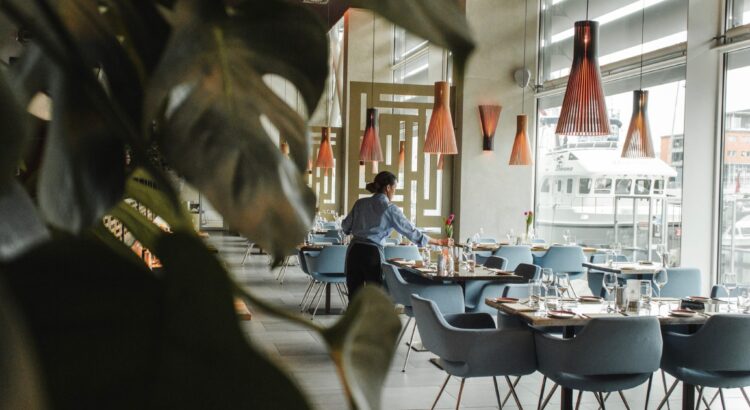In today’s fast-paced world, the key to staying competitive is designing solutions that truly meet the needs of your customers. Human-Centred Design (HCD) is an approach that ensures the customer is at the core of every decision, creating experiences that are intuitive, efficient, and delightful. For restaurants and retailers, HCD can offer a roadmap to transform not just your products, but your entire customer journey.
What Is Human-Centred Design?
Human-Centred Design is a design methodology that places human needs, desires, and limitations at the forefront of the design process. Rather than focusing solely on profitability or aesthetic appeal, HCD encourages businesses to empathize with their users to develop solutions that truly address their pain points and aspirations.
The process typically involves three phases:
- Inspiration – Understanding the needs and challenges of your customers through research and observation.
- Ideation – Brainstorming creative solutions based on the research insights.
- Implementation – Bringing the best ideas to life through iterative prototyping, feedback, and refinement.
Why HCD Matters for Restaurants and Retailers
Restaurants and retailers face increasingly complex challenges. From shifting customer preferences and new technologies to fierce competition, it’s no longer enough to simply offer a product or service. You must offer an experience. In this environment, HCD can be a game-changer, providing key insights into what your customers want and how to deliver it in a way that is meaningful and impactful.
1. Enhancing Customer Experience
The core of HCD is empathy – understanding your customers deeply. For restaurants, this could mean rethinking the menu layout to make it easier for diners to navigate, or redesigning the seating arrangement to create a more intimate and relaxed atmosphere. For retailers, it could involve simplifying the checkout process or designing a store layout that feels more intuitive. By listening to your customers and observing their behaviour, you can uncover insights that lead to a better, more personalized experience.
2. Building Loyalty and Trust
Human-centred design also fosters trust between businesses and their customers. When consumers feel that a brand truly understands their needs and tailors its offerings to meet those needs, they are more likely to return. For instance, restaurants that offer vegan, gluten-free, or other dietary options not only attract more customers but also signal that they care about their guests’ well-being.
3. Improving Operational Efficiency
HCD isn’t just about creating a pleasant experience for customers; it can also streamline operations. In a restaurant, improving the design of the kitchen or automating certain tasks (like reservations or online ordering) can reduce staff workload and enhance service speed. Similarly, in retail, using customer data to optimize inventory management or improving the design of a website can result in smoother operations and higher sales.
Implementing Human-Centred Design in Your Business
So how do you begin to incorporate human-centred design into your restaurant or retail business? Here’s a practical guide to get started.
Step 1: Conduct User Research
The first step in HCD is to understand your customers. This can be done through various methods, including interviews, surveys, focus groups, and observations. For example, a restaurant could ask diners what they like or dislike about the ordering process. Retailers might observe how customers navigate the store or browse online.
The goal is to gather as much information as possible about the customer’s behaviour, pain points, and motivations. The insights you gather will inform the design process and help ensure that any changes you make truly benefit the customer.
Step 2: Ideation
Once you have a solid understanding of your customer, it’s time to brainstorm solutions. Gather a diverse group of team members to generate a wide range of ideas. This is a critical part of HCD because it encourages out-of-the-box thinking. No idea is too big or too small during this phase.
For example, in a retail environment, if you discover through research that customers are often confused about the availability of certain items, one solution could be to implement a live inventory system that updates in real-time on your website or app.
Step 3: Prototype and Test
After brainstorming, select the most promising ideas and create prototypes. These don’t have to be perfect – they can be as simple as sketches or digital mock-ups. The goal is to quickly test these concepts to see what works and what doesn’t.
For restaurants, this might involve testing new menu layouts or seating arrangements with a small group of diners. For retailers, it could mean launching a beta version of a new online shopping experience and gathering feedback.
Step 4: Iterate
HCD is not a one-time process. It involves continuous refinement. Based on the feedback from your prototypes, go back and tweak the design. Keep testing and improving until you’ve created a solution that meets your customers’ needs.
The Role of Technology in HCD
Technology plays a critical role in human-centred design. From apps that allow diners to customize their meals to augmented reality (AR) that enables customers to “try on” clothes virtually, modern technology offers endless possibilities to enhance the customer experience. Both restaurants and retailers should embrace these tools to make the customer journey more engaging and efficient.
Conclusion: Staying Ahead with HCD
As customer expectations continue to evolve, human-centred design offers restaurants and retailers a powerful way to stay competitive. By putting the customer first, you can create meaningful experiences that drive satisfaction, loyalty, and business growth.
At Razorse Software, we specialize in helping businesses in hospitality and retail implement human-centred design in their digital platforms and customer journeys. Get in touch to learn how we can help you create intuitive and user-friendly solutions tailored to your customers.
